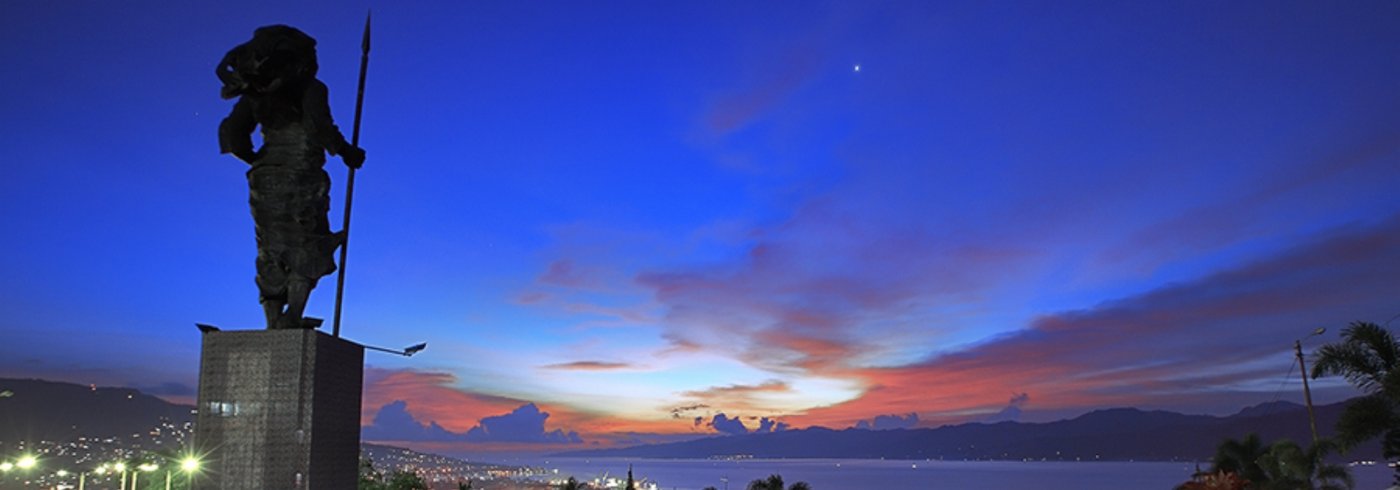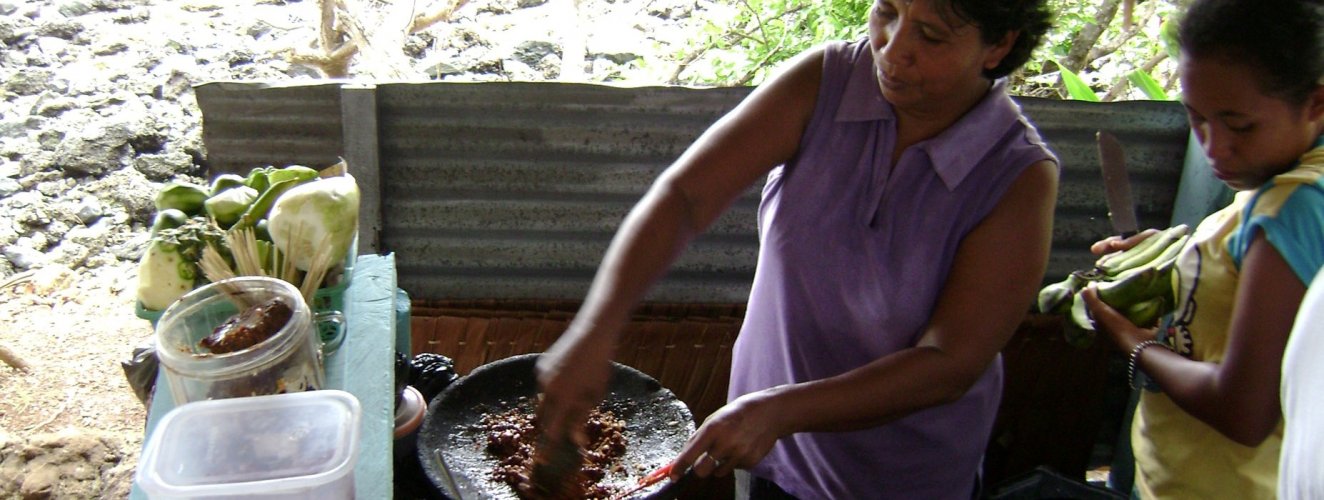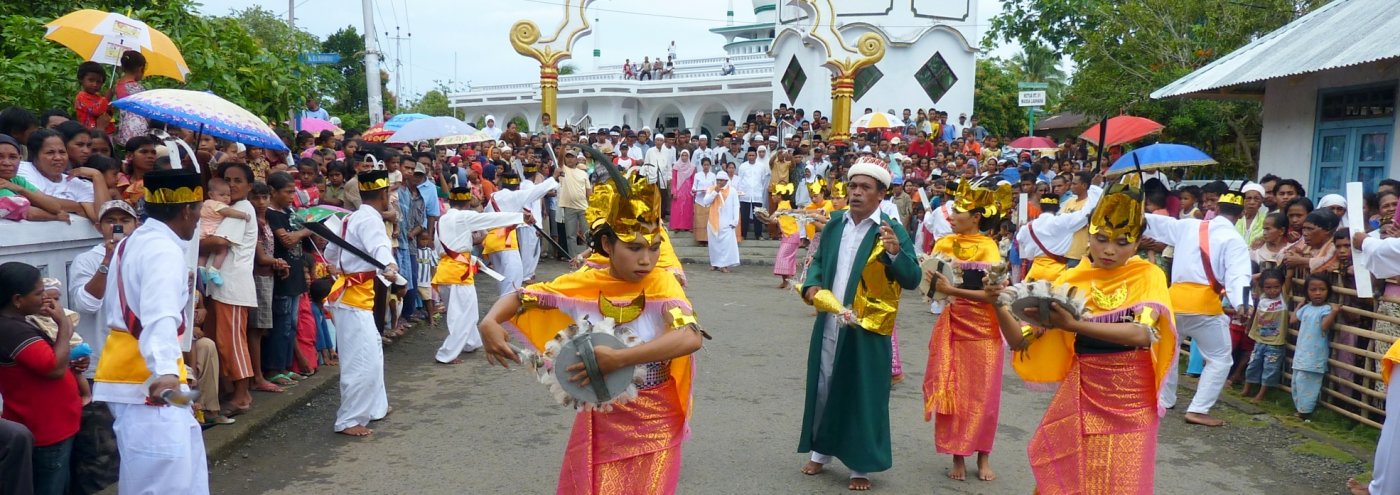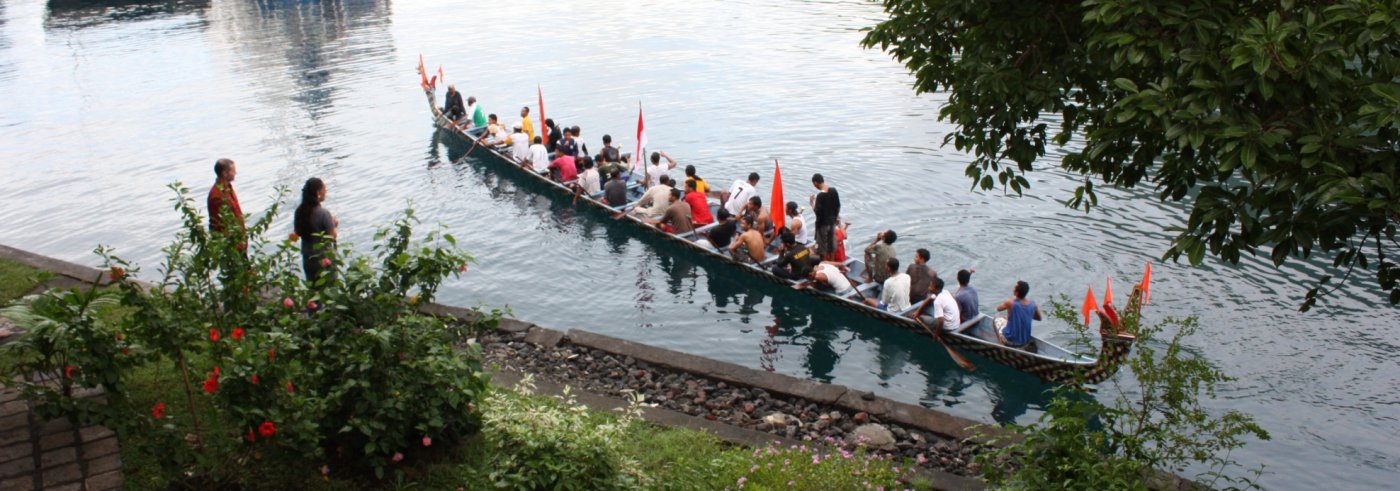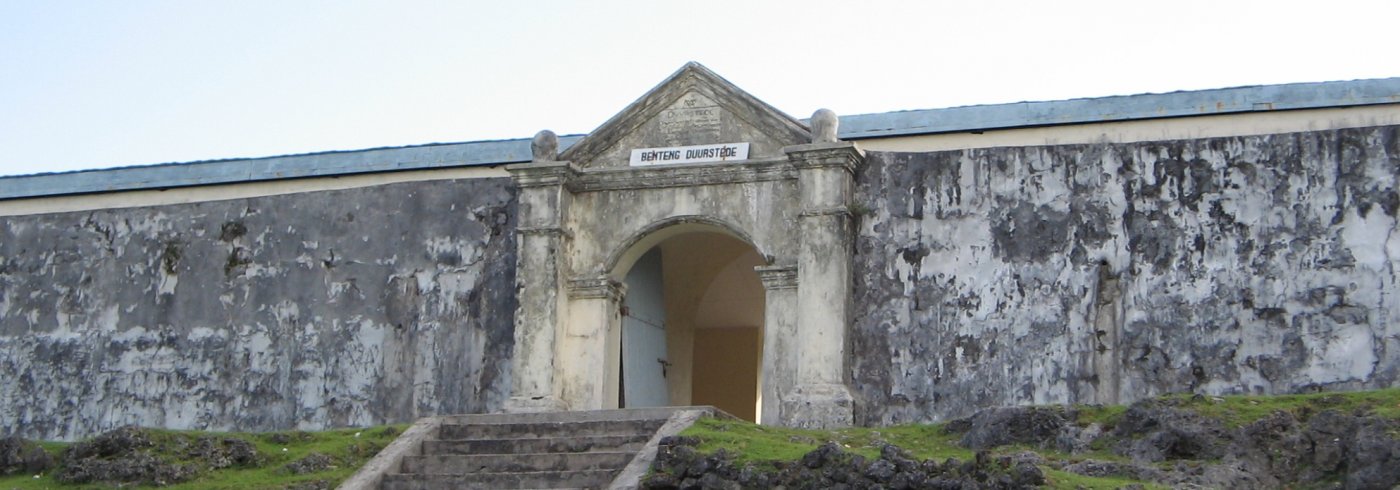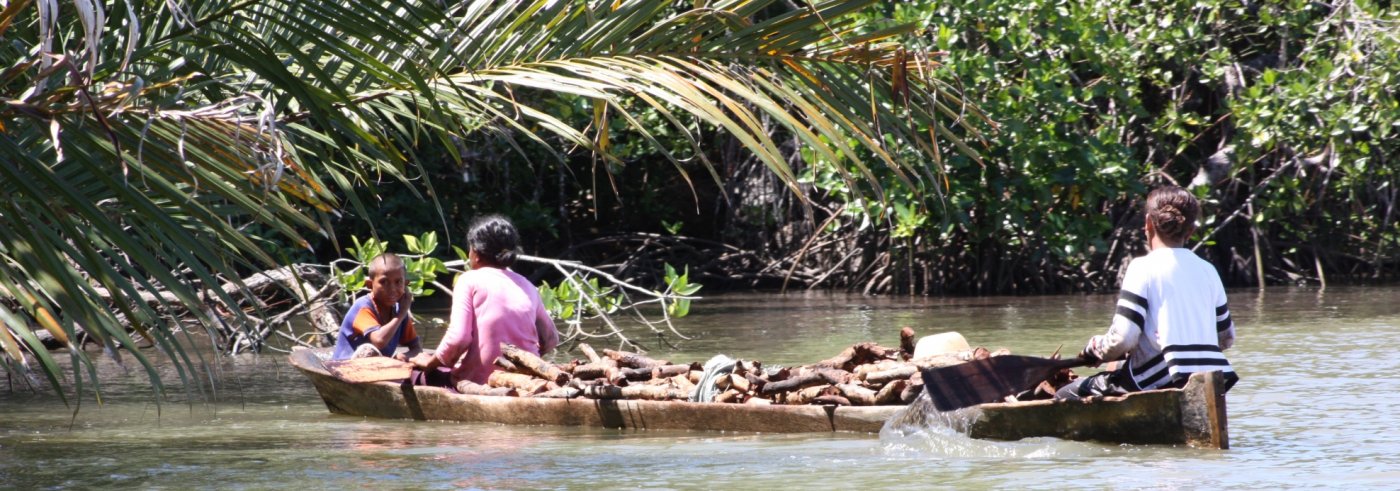Tour module 11 days diving Banda islands
Banda Neira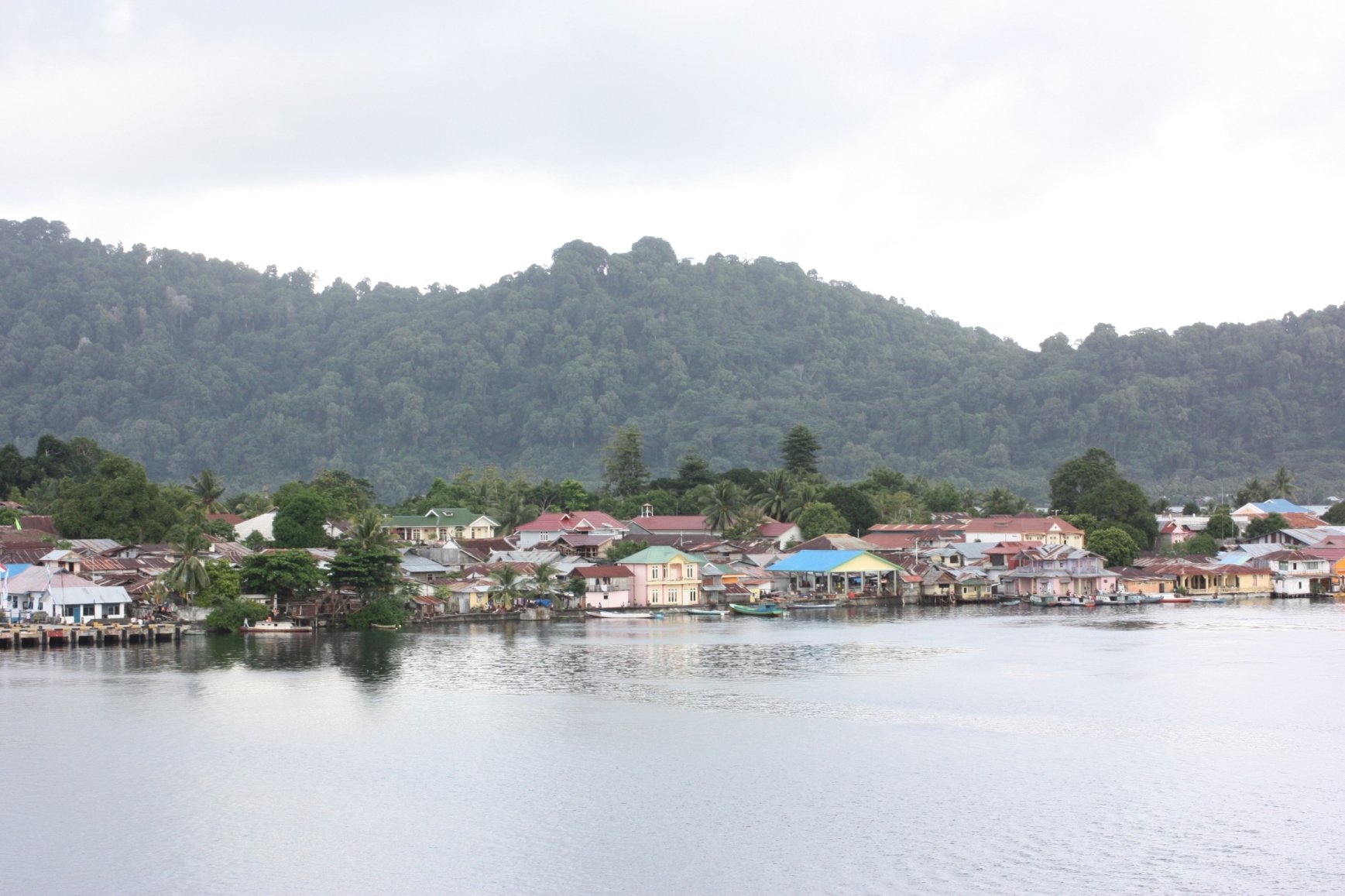 Banda islandsThe Banda Islands (Indonesian: Kepulauan Banda) are a group of ten small volcanic islands in the Banda Sea and belong to the Indonesian archipelago of the Moluccas and the province of South Moluccas.The population is approximately 15,000. Its capital is Banda Neira, on the island of the same name. Banda is not always easy to reach. There are three weekly flights to and from Ambon, often with small 12-person planes. However, flights are often canceled at the last minute. From September to mid-December and February to the end of April a fast boat sails twice a week to and from Ambon. The trip takes about four hours. Then there are the Pelni passenger ships that sail an average of three times every two weeks throughout the year between Ambon and Banda.  Sights to visitThe Banda Neira island tour is done on foot: You visit the fort Belgica, the Hatta house (Co-founder of the Republik Indonesia Mohammed Hatta was exiled by the Netherlands to Banda in colonial times. He started a school here, among other things.), The Banda museum with many relics and images from the VOC era and the old church with cemeteryBanda Besar: By longboat you sail in half an hour to the island of Banda Besar. Here you will find Fort Hollandia, the gravestone of Nona Lantsuese and the nutmeg plantation of the van den Broeke family. Gunung Api is the island with the volcano. You will sail by longboat to the south side of this volcano island to make the two-hour climb to the top at around 5:30 am. At the top you have a beautiful view and you can enjoy the sunrise. Snorkeling and Diving: The Banda Islands are home to dozens of beautiful snorkeling and diving locations, with colorful coral and many different fish. A wonderful day of snorkeling and relaxing on a white beach is an absolute must. Lunch is not to be missed with fresh fish from the fire! Around October, divers may encounter large schools of hammerhead sharks at Pulau Hatta. During that month there are also several liveaboards offering dive cruises between Ambon and Banda. 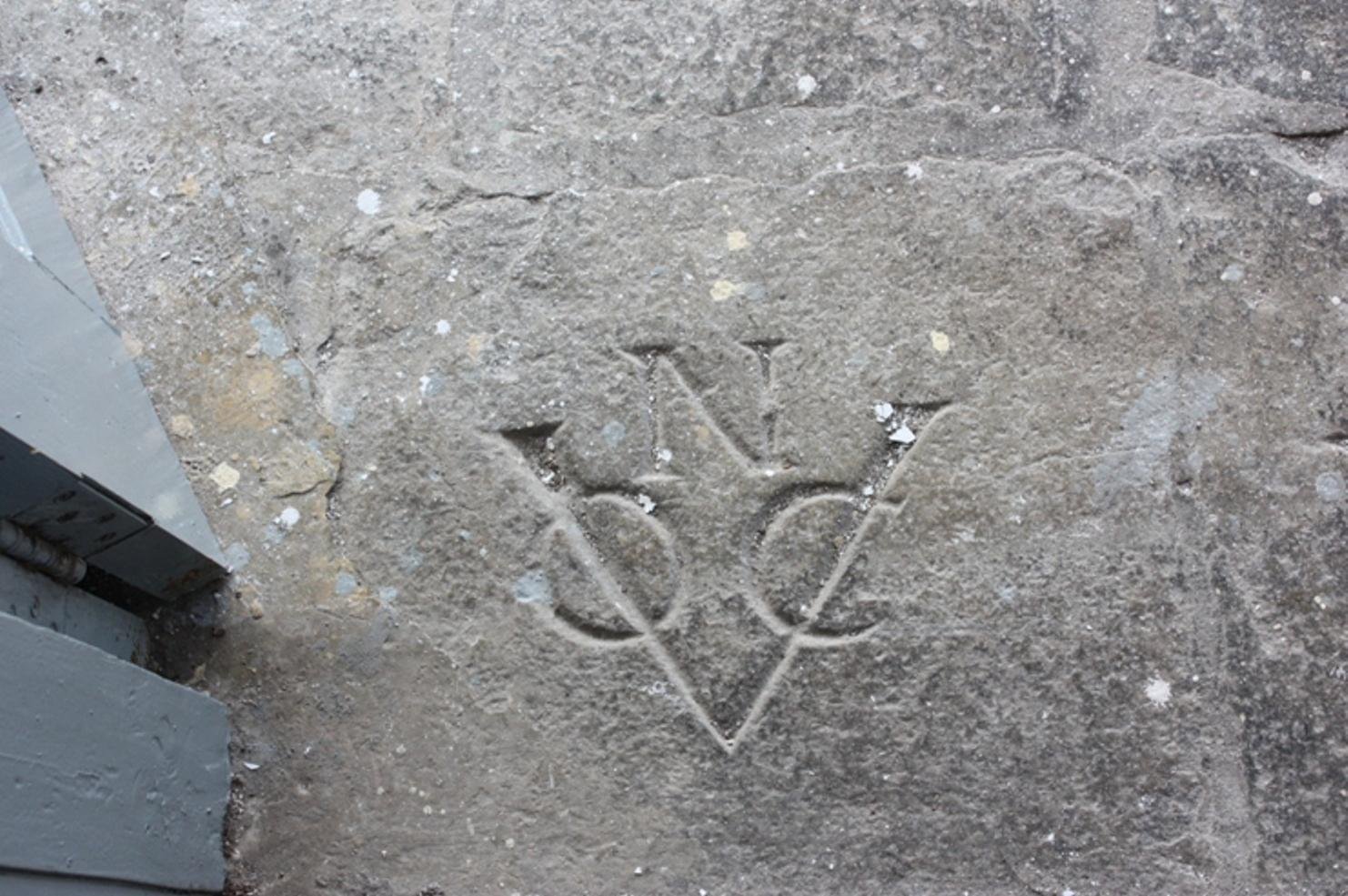 HistoryUntil the mid-18th century, the Banda Islands were the only known place in the world where the spices nutmeg and mace were grown. The Dutch conquered the islands in the 17th century to control the production of nutmeg and mace. At that time, nutmeg was very profitable in Europe. It was part of plague quack remedies, and a monopoly was very lucrative.The local population was massacred by the Dutch in 1621 under the leadership of Jan Pieterszoon Coen, and replaced by slaves from Madagascar and Indians. Fort Belgica on Banda Neira, one of the fortresses built by the VOC, is the largest European fort in Indonesia. Another fun fact: At the time, 'The Netherlands owned almost the entire Banda archipelago. Only the island of Pulau Run belonged to England. In 1667, the Netherlands exchanged the island with the English against the colony of New Amsterdam, now New York ... Violent religious strife broke out in 1999, which dealt a serious blow to tourism. One of the last perkeniers on Banda was Wim van den Broeke, who lived on the island of Lonthor, also known as Banda Besar. Both Prince Bernhard and former minister Pronk visited him. The van den Broeke family owned five nutmeg plantations, of which Groot Waling on Lonthar is the oldest. A large part of the van den Broeke family died during the religious disputes. 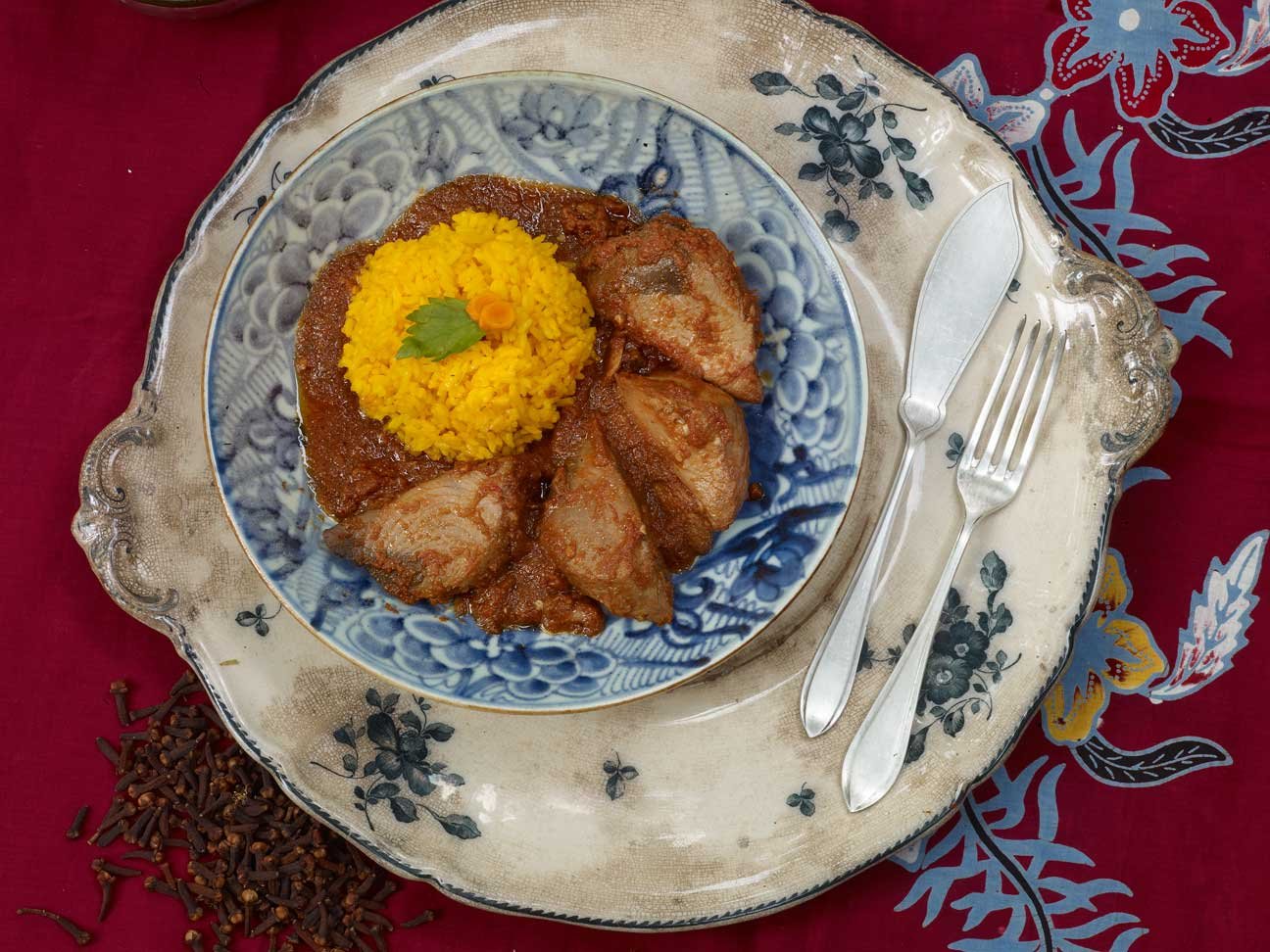 Favourite restaurantNo doubt, the best tuna fish comes from Ibu Dila at the Cilu Bintang Estate. The Tuna Rujak style is to die for!Dive spots Banda archipelago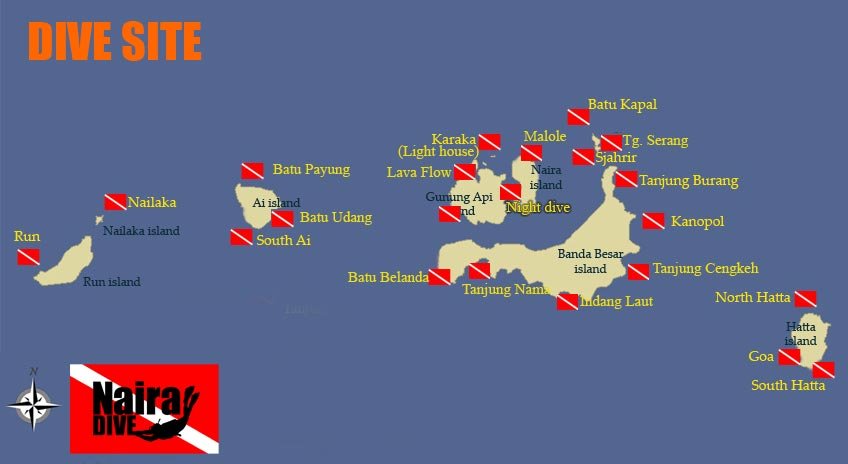 Dive informationDive Season: The best months for diving are September to early December and March to April but also the months between. October and November are the best months to spot large schools of hammerheads. The Moluccan islands have the seasons reversed from the rest of Indonesia, when they have the dry season, its rainy season in Indonesia.Visibility: Usually is good (20-30m) except some muck sites close to the harbour or where sand is easily stirred up. Water Temperature: 20C/68F – 27C/80F Skill Levels: Dive sites are available from beginner through advanced. Dive Access: Land based diving, boat diving and shore diving. Many live-aboard start and end their itinerary in Ambon. Good option to add land based diving at the beginning or ending end of you live-aboard trip. 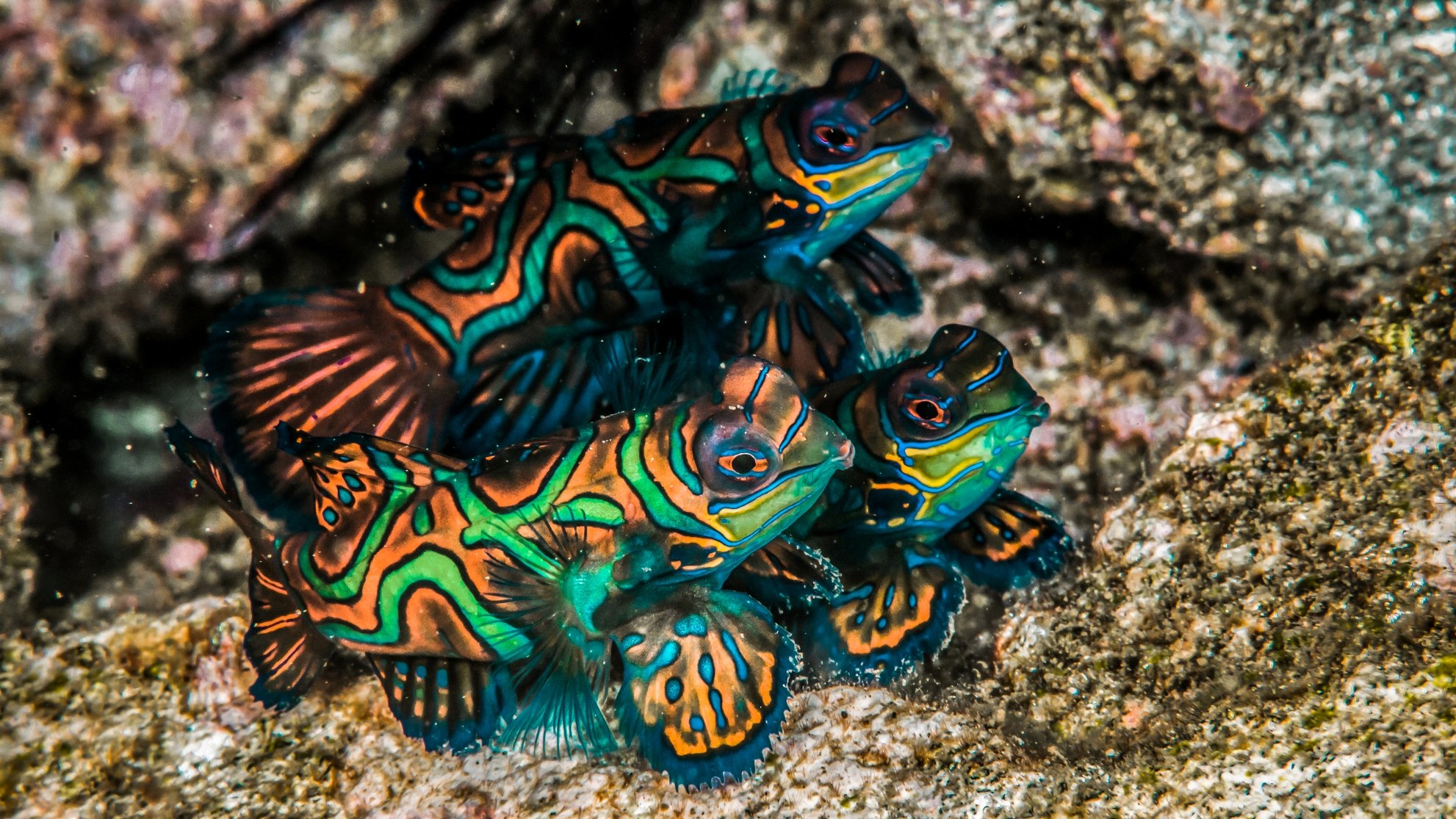 Mandarin cityJust in front of Hotel Maulana , you find a dive site that we call Mandarin city because it is nearly impossible to miss the colourful Mandarin fish living here. If you go for a sunset dive the chances are great you become witness of their daily mating activities. In the vicinity of the Mandarin fish’s home is the main pier of Banda Neira. It is overgrown with ascidians, sponges and soft corals and hosts juvenile batfish, crocodile fish, a variety of different scorpion fishes, hundreds of pipefish, large moray eels, and so on. There is still so much to discover that it is always worth getting a tank and jumping in directly in front of the dive center.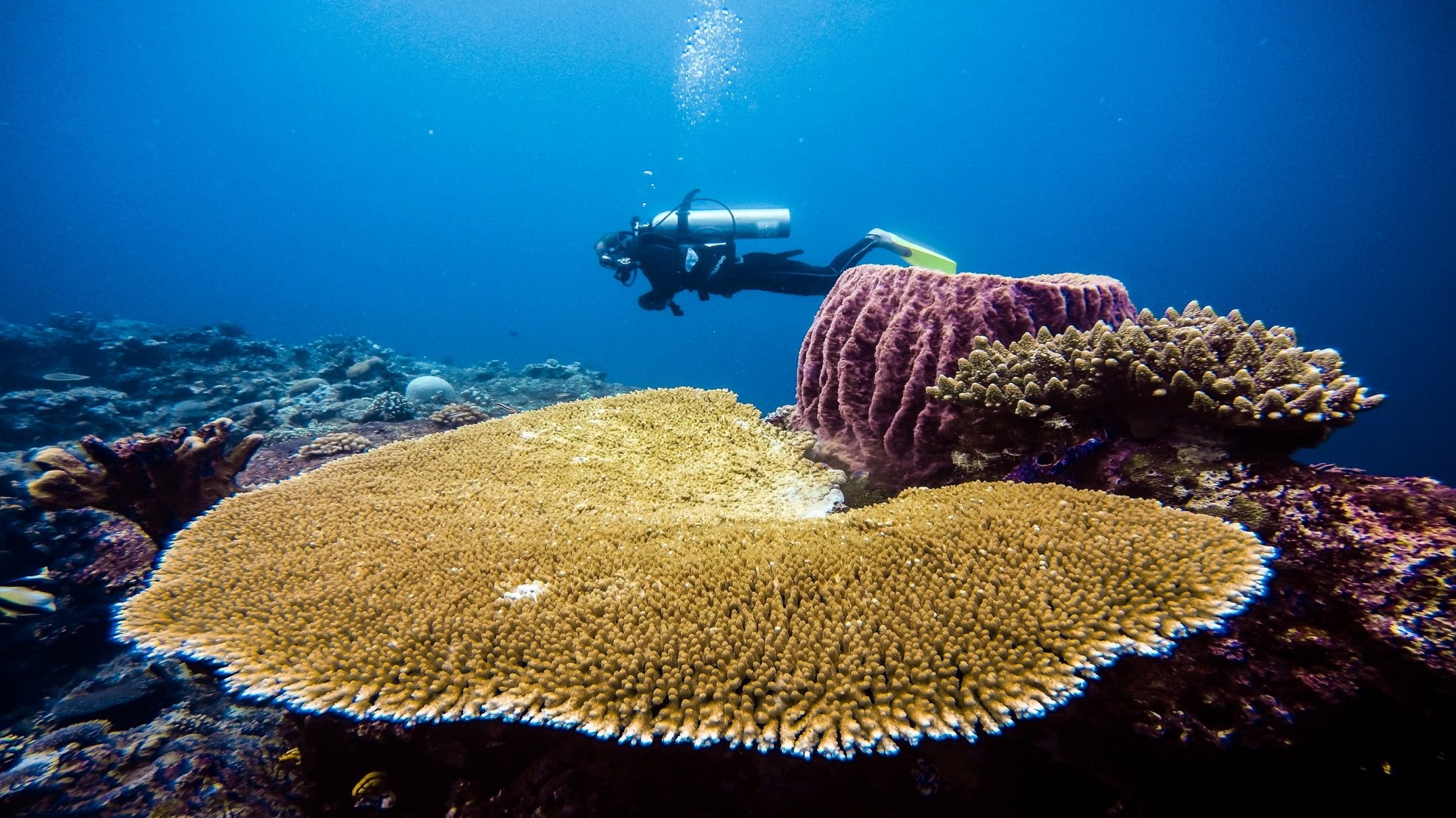 Pulau Pisang“ Pulau Pisang, the “Banana island” is just a 20 min boat ride from Banda Neira and is surrounded by healthy and species-rich coral reefs that are home to a larger number of colourful reef fish such as Butterfly-, Surgeon-, Trigger-, Parrot- and Angelfish. The reefs are also considerd to be part of Banda’s top spawning grounds. The reef slopes are all ending in a wall going down to 25-50m, which is covered with Gorgonians, sponges, anemones, whip corals, and so on. The dives here are usually moderate drift dives with strong currents only at the most northern and southern tips of the island.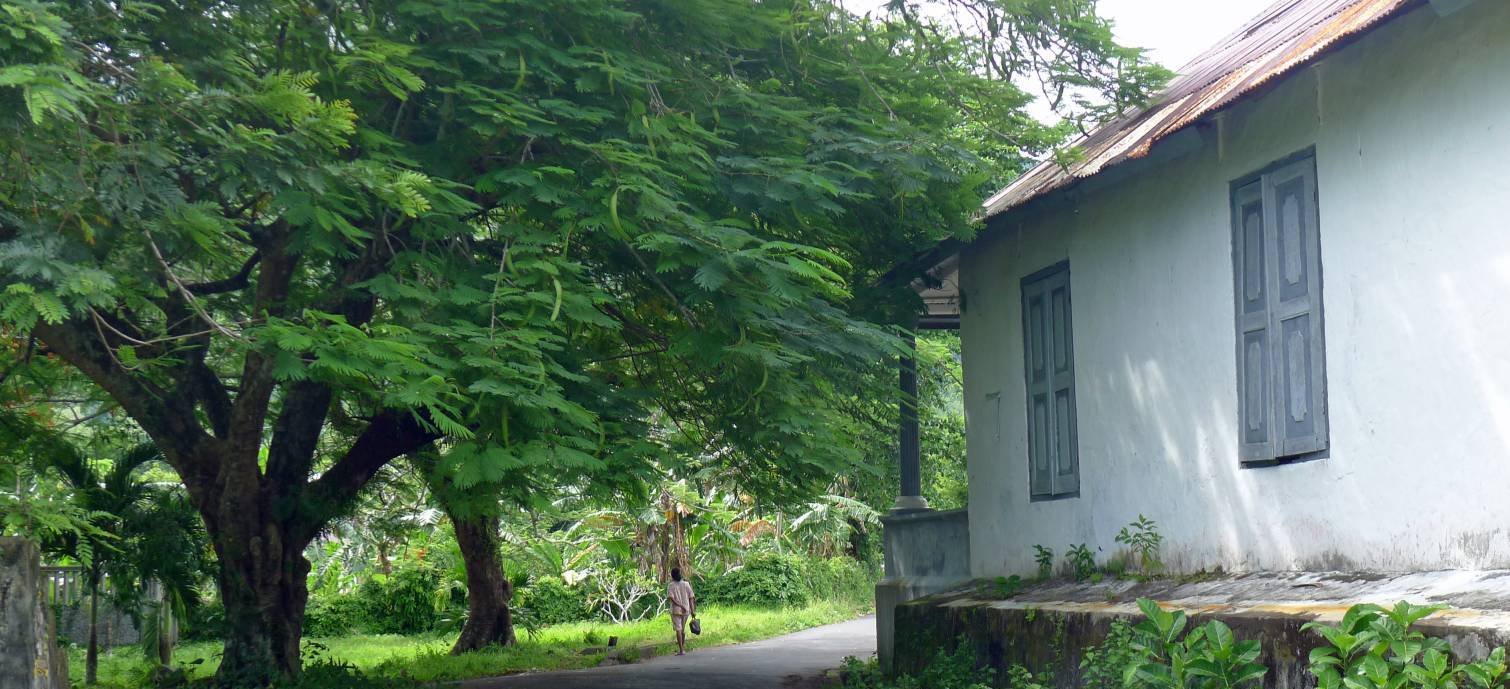 Banda BesarBanda Besar offers a number of beautiful coral dive sites with hard coral reefs usually ending in a soft coral-, sea fan- and barrel sponge- covered wall. Along the southern coast aggregations of fish such as rainbow runners and redtooth triggers can be found. Napoleons are also frequently encountered at most of the dives sites. Some dive sites to be mentioned here are Karnopol, Tanjung Cengke, Batu Belanda and Pohon Miring. Apart from its beautiful wall and its large cave that can be discovered at a depth of 10 meters, Batu Belanda is famous for some eagle rays that are often “flying by”. Pohon miring, on the northern tip of Banda Besar impresses with its picturesque rock structure as a colourful and large swim-through can be found here. Pohon miring is also a point where the currents from the southern and northern site of the island meet, which attracts a lot of fish.The Lava flow in the north of Gunung Api is probably one of Banda’s most extraordinary dive sites. After the volcano erupted in 1988, the gravel on the bottom of this dive site was covered with lava. Very soon, corals (mostly Acropora) started to grow on the cold lava and since then have formed a huge coral reef with nearly 100% hard coral cover. Why corals were able to grow so quickly is still not totally clear but the surface structure of the lava seems to play an important role. This dive site demonstrates very well how succession in a coral reef can take place. It is not only interesting for coral experts but is also a must for every diver who is visiting the Banda islands. 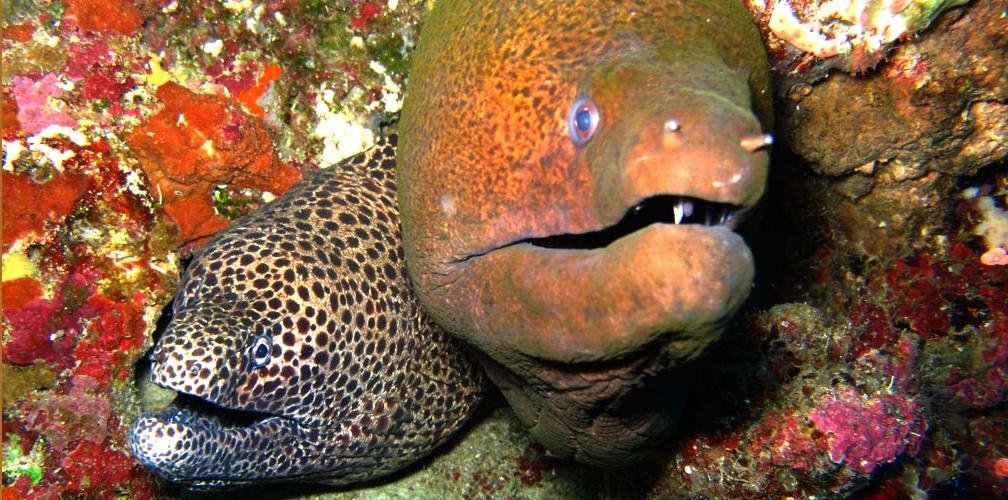 Batu KapalThe dive sites of Batu Kapal belong to our personal favourites. Batu Kapal is a rock sticking out of the water north of Pulau Pisang. Below the surface, deeper rocks and boulders can be found. The largest of them is located west of the main rock. It starts on 8m and its peak can easily be seen from the surface. It is connected to the next deeper rock northwards. Both are forming a valley in between them and both are going down to more than 50m. Huge gorgonias and barrel sponges grow on the walls, hosting big Moray eels and the biggest population of red tooth trigger fish we have ever seen. The eastern side of Batu Kapal forms a channel with some boulders. The wall of the channel is colourful and rich in fish and invertebrate species. For example, 4 differently coloured scorpion leaf fish have already been found on the dive site. The safety stop area close to the main rock is also an eye catcher as most of its boulders are covered in bright orange soft corals.In general, Batu Kapal stands out because of the amazing visibility that often reaches 40-50 m. This is also the place with a chance to see larger pelagic fish. However, Batu Kapal is also known for its strong changing currents that make diving impossible some times of the day. Quite a few things make this place one of the top dive sites in Banda. A steep slope covered with coral, a straight and spacious 15-meter long swim-through full of gorgonias that exits next to a beautiful wall covered with sea fans and huge sponges, a rocky plateau full of small critters where big Napoleons and other fish like to play with the current and an amazing visibility that makes it a perfect package for divers who enjoy the current. 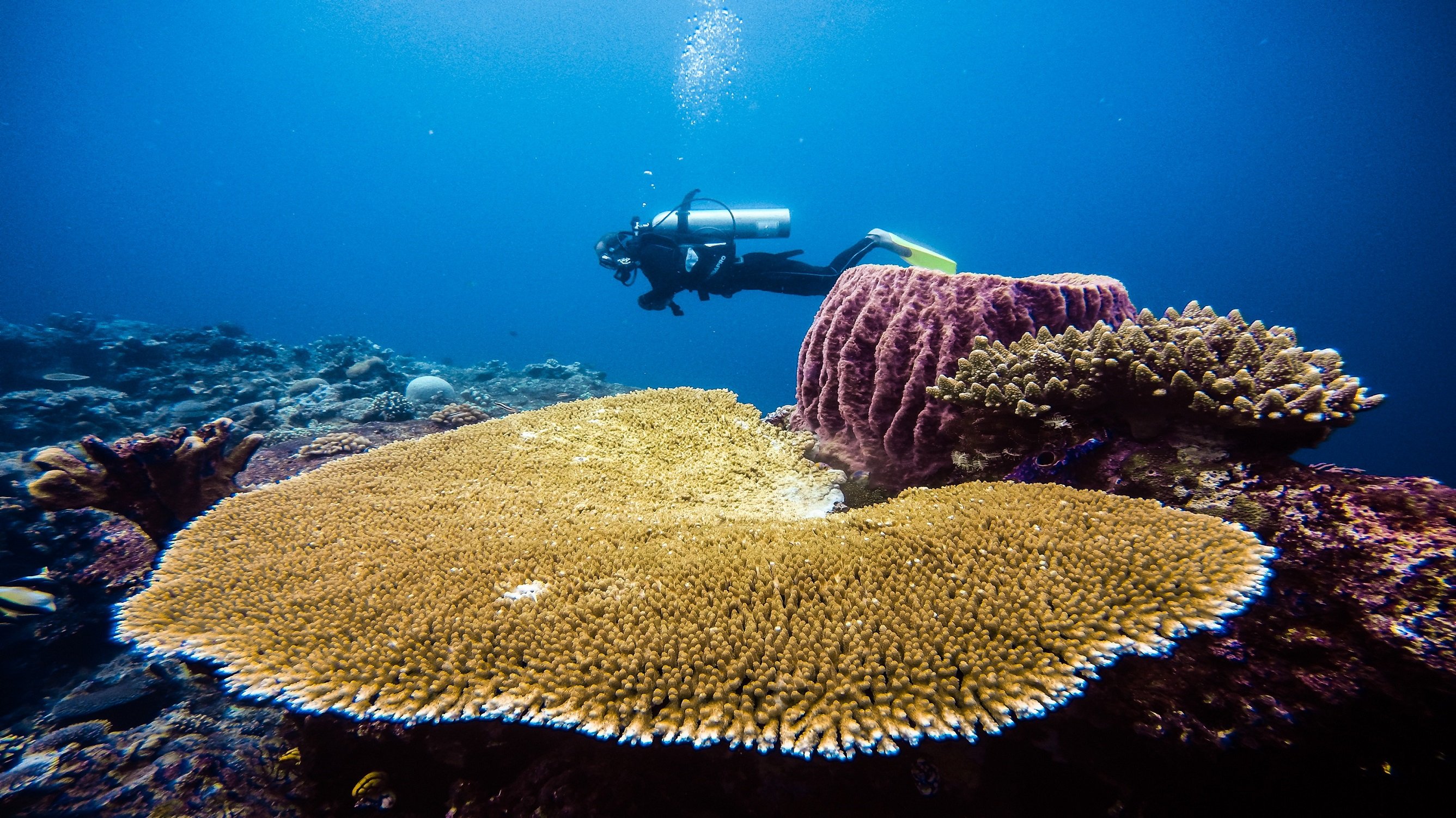 Lava FlowDeze bijzondere duik- en snorkellocatie ligt aan de noordkant van de vulkaan Pulau Hatta, op ongeveer 25 minuten varen vanaf Banda Neira.De laatste uitbarsting van de vulkaan, in 1988, veroorzaakte een lavastroom tot in de zee. De temperatuur van het water is daardoor sterk gestegen, hetgeen grote invloed heeft op de onderwater flora en fauna. In het ondiepe gedeelte floreert het koraal, iets dieper kun je Fusiiers, Parrotfish en zwarte Triggerfish spotten. In het diepe gedeelte, rond de 20-25 meter vind je Napoleon Wrasse, Batfish en met wat geluk de Mobula Rays... 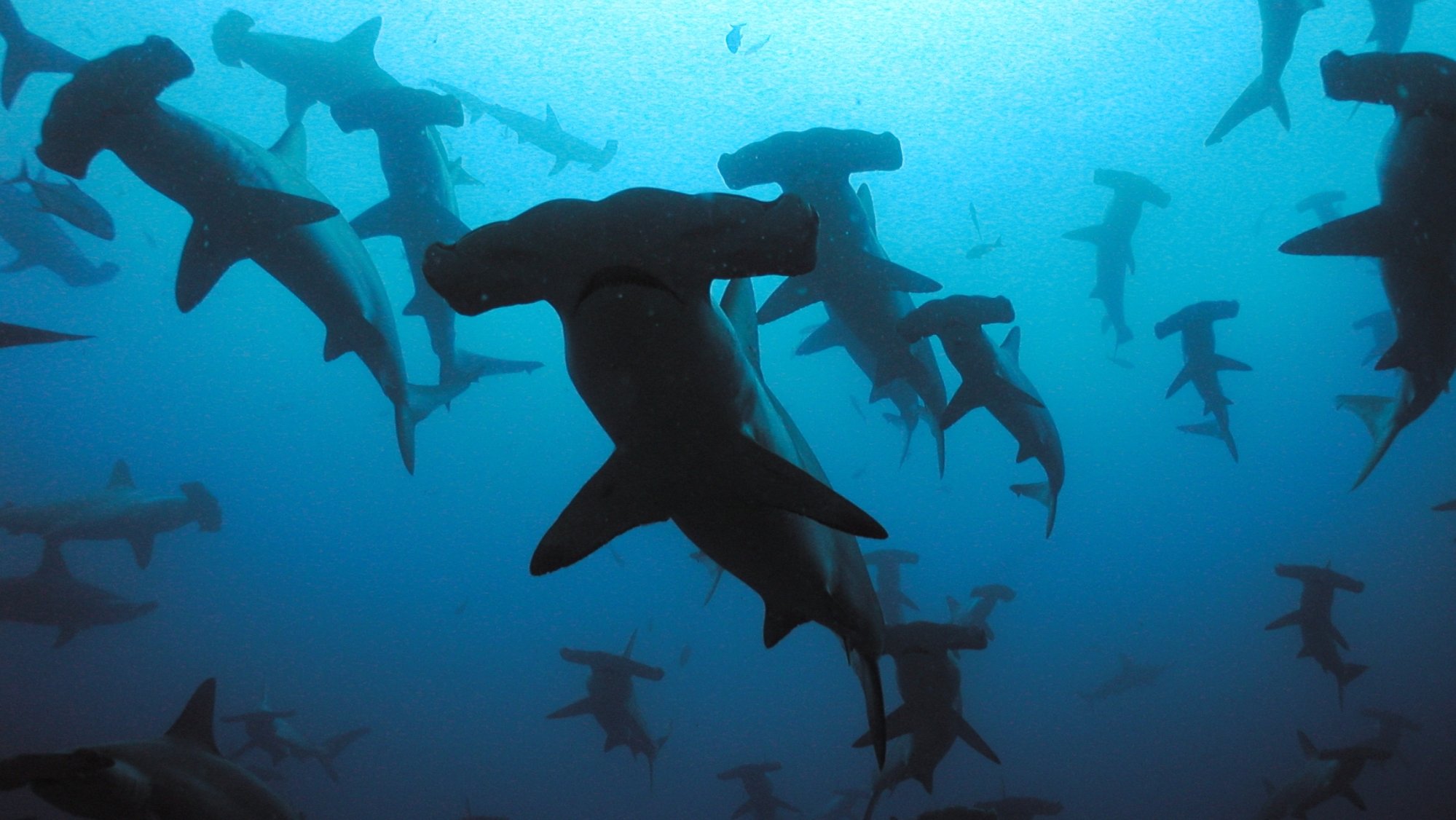 Hatta island25 km from Banda Neira. Skaru Atoll, is the name of a coral, few hundred yards south of the island, there are some colonies of unicorn fish, Fusiliers, jacks fish and rainbow runners, white-tip sharks measuring almost two meters, napoleon wrasse, dogtoothed tuna, and turtles.Pulau Hatta is known for its great snorkelling sites but it is even better for diving. In front of Hatta’s west shore beach, a 5 m wide hole in the reef top opens up to the open sea. You can dive down through it and will then find yourself looking back to what looks like a bridge on the coral reef. The bridge is covered with soft corals of all colours and underneath it, large Gorgonians that shelter a couple of Pigmy seahorses. You can continue the dive as a relaxed drift along the wall, one of Banda’s most diverse sites in terms of reef fish, shrimps, molluscs and corals. Sea turtle encounters are also quite frequent in Hatta. Hatta’s other dive sites are similar to the wall of Hatta bridge. Fish and coral diversity is great everywhere, including schooling barracudas, batfish, Napoleon wrasses and much more. Karang Hatta is a reef located South East of Pulau Hatta. Its dive sites are the nearest sites to the 6000m deep Banda trench, which makes diving interesting as the chances to see big pelagics are the best here. Schooling trevallies, barracudas, tunas and even chances to see bigger sharks (hammerheads and grey reef sharks), as well as many turtles can be seen around this underwater mountain. The reef surface had been bombed years ago but is showing good signs of recovery already. 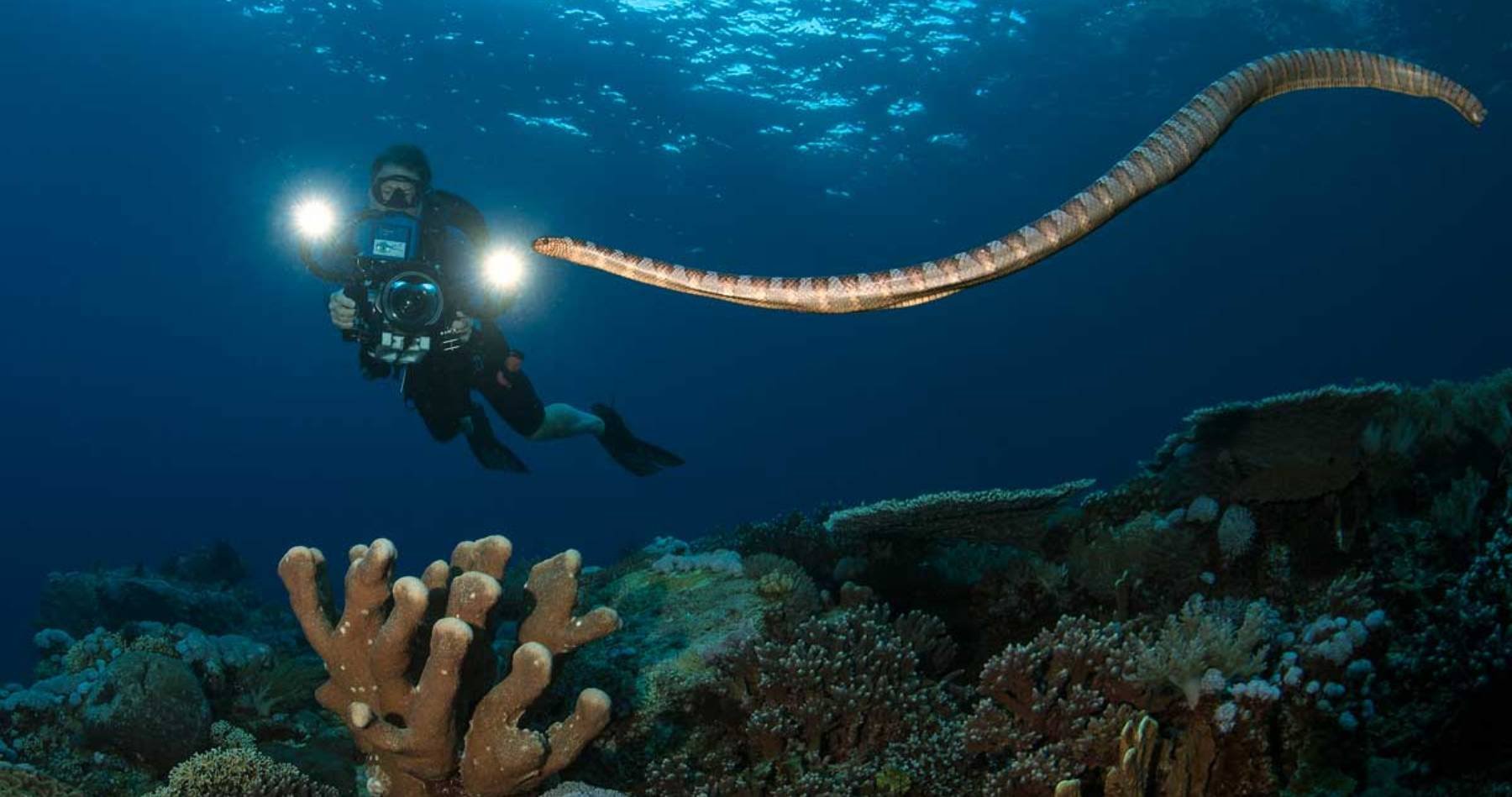 Pulau AiAi Island: north and south-west coast surrounded by beautiful reef wall, full of caves also the habitat for fish in the harbours. Just as Pulau Hatta, Ai offers some of Banda’s best reefs. The northern sites of the island, for example the dive site Batu Payung (= Umbrella rock), have a rather steep wall with lots of cracks and overhangs whereas the southern reef areas are sloping down to the sandy bottom at 40-50m. In the south of Ai, occasionally Hammerhead sharks have been spotted, giving this dive site its name “Hammerhead point”. Napoleons and turtles can also often be seen here.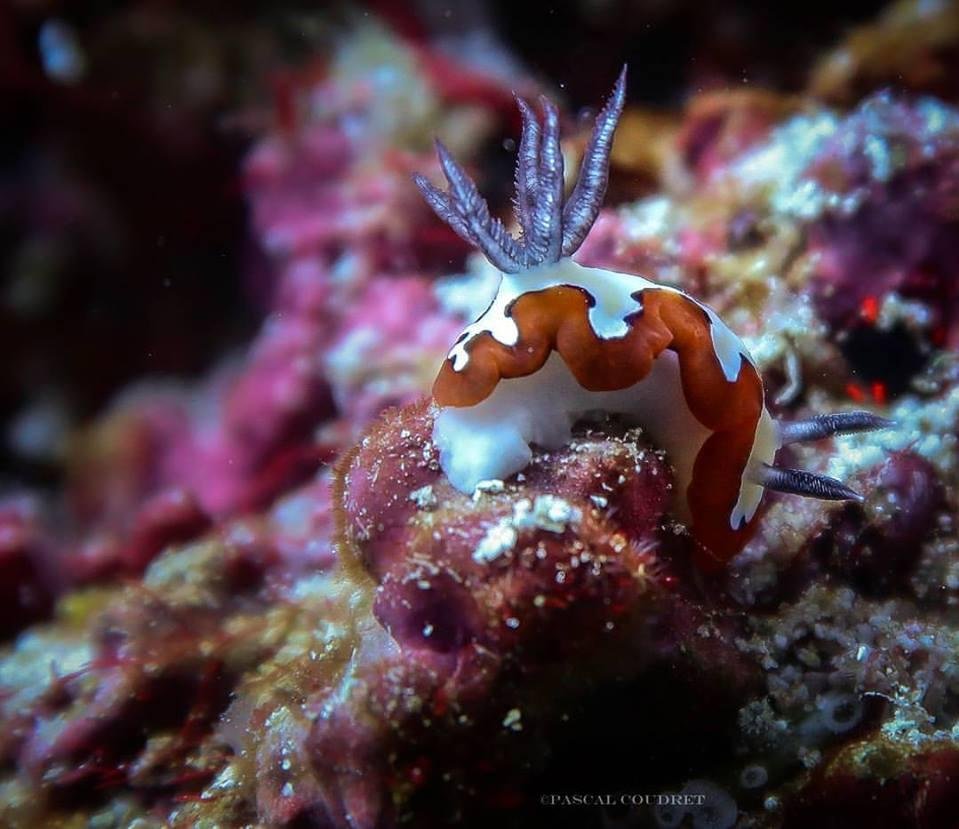 Karaka IslandKaraka Island of Crab Island ligt op korte afstand van Gunung Api. Het noordkuststrand is perfect voor een picknick. Pulau Keraka, ook bekend als Lighthouse, biedt een zeer interessante diversiteit aan zeeleven. Stromingen zijn hier zelden sterk, waardoor het een zeer makkelijke site is om te duiken en foto's te maken. De mix van rotswanden, koraalblokken op een zandbodem en een rijke riftop biedt een verbazingwekkende verscheidenheid aan kleine beestjes zoals snoepkrabben, naaktslakken, Ornate Buikbek-vissen, Bladschorpioen-vissen en nog veel meer, waardoor deze site de favoriet van een macrofotograaf is, voor zowel overdag als 's nachts duiken. En als het je lukt om je blik van de kleine beestjes af te wenden, zul je ook Giant Moray Eels, Great Barracuda's in het blauw zien zwemmen, Napoleon Wrasses, schildpadden en nog veel meer.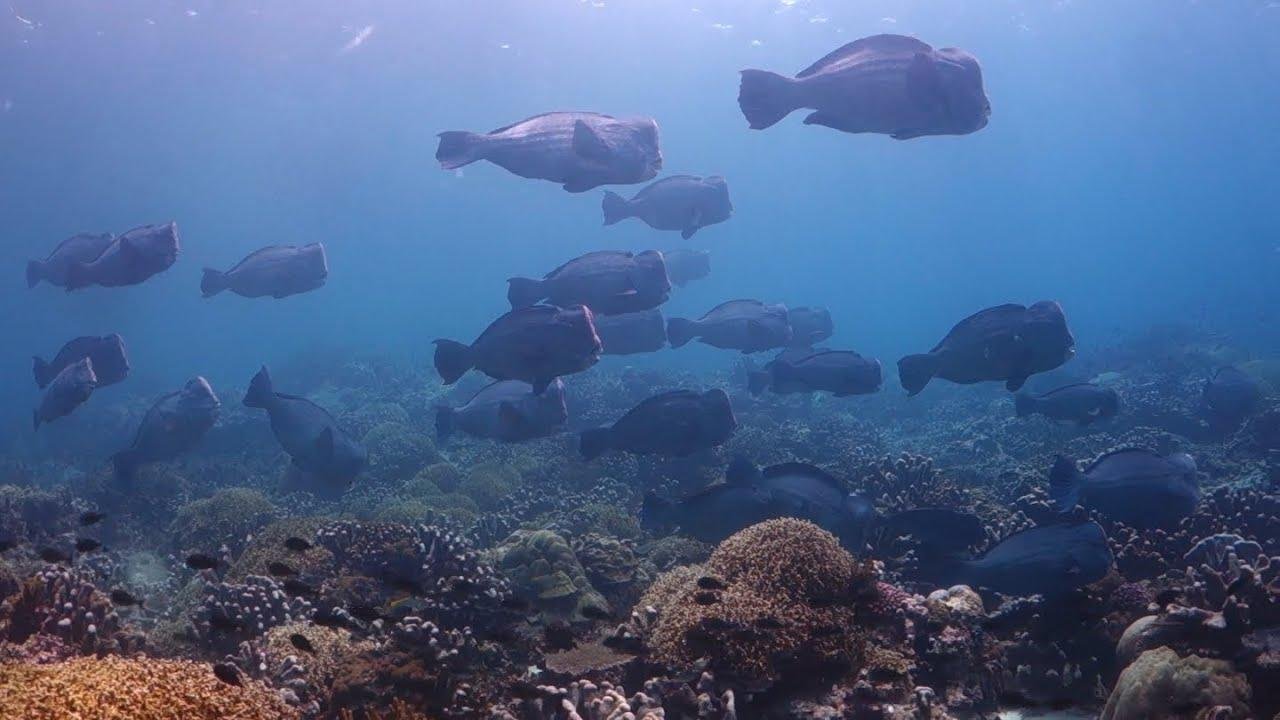 Pulau RhunThanks to its remoteness, Rhun and the little island of Nailaka offer outstanding reefs and large amounts of fish. After putting your head under water and having had lunch on the beautiful white beaches of Nailaka you will definitely have forgotten the 2 hour boat ride it takes to get there.Pulau Hatta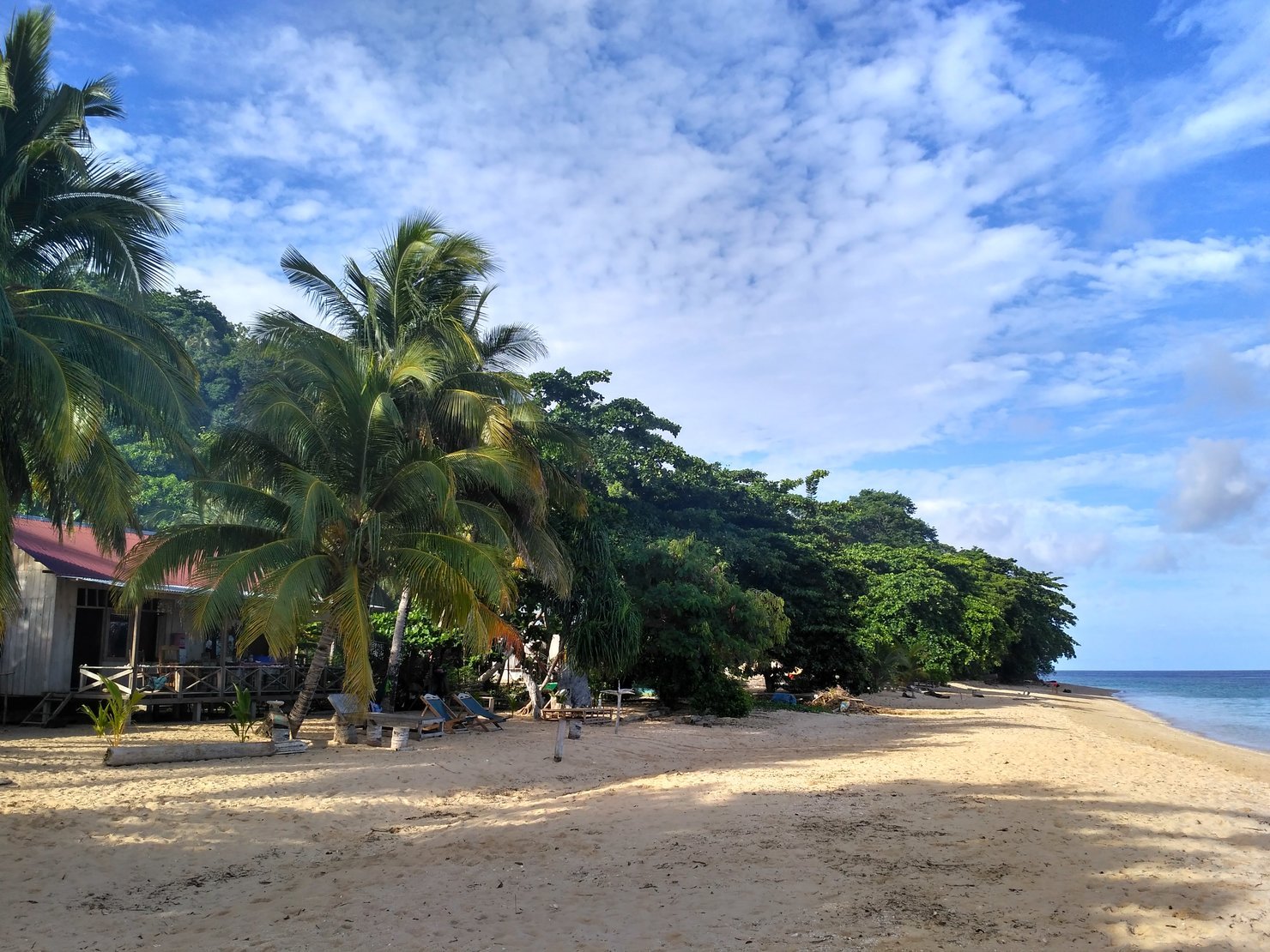 Pulau HattaPulau Hatta, oftewel Hatta eiland, ligt op ruim een half uur varen vanaf Banda Neira. Een prachtig klein Bounty eilandje waar eigenlijk alleen duikers op af komen. |

